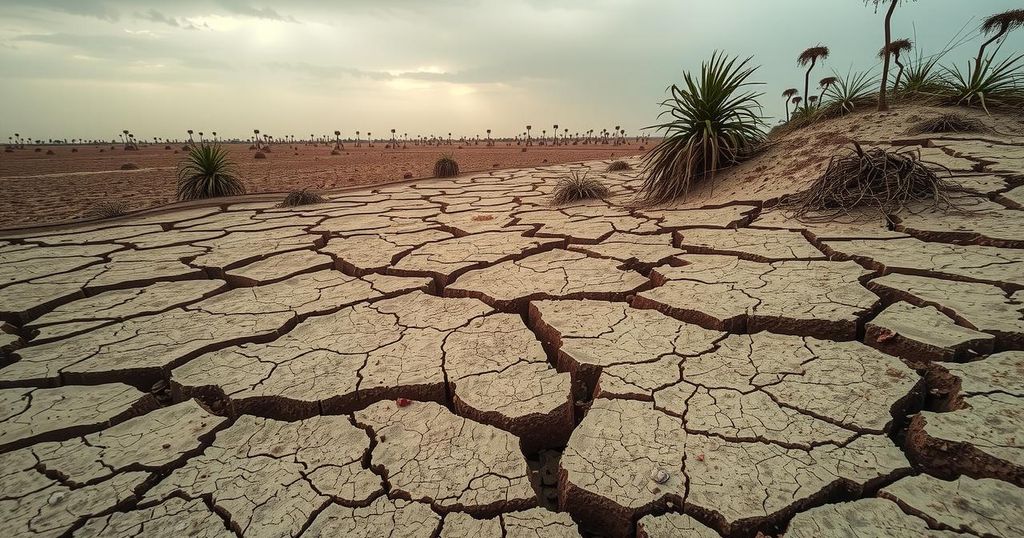The famine in Sudan is claiming lives as families suffer severe malnutrition due to war-induced food shortages. Mona Ibrahim lost two children in a camp near El-Fasher. Conditions in Zamzam and other areas have deteriorated, with little aid provided. Over 12 million are displaced, marking Sudan’s crisis as one of the worst in history. The war has decimated agriculture, leaving many to starve firsthand, with various regions facing hunger for the first time.
The ongoing war in Sudan has precipitated a severe famine, with mothers like Mona Ibrahim bearing witness to unimaginable loss. She has buried two of her children, Rania and her infant son Montasir, both succumbing to malnutrition at the Zamzam displacement camp near El-Fasher. Rania passed away shortly after being admitted to El-Fasher’s only hospital, suffering from acute diarrhea, while Montasir followed weeks later, affected by malnutrition.
Currently, around 500,000 to 1 million individuals reside in the Zamzam camp, which has been declared a famine zone by the United Nations. As conditions worsen throughout the region, two additional camps have reported similar crises. Ibrahim now fears for her young daughter Rashida, who is suffering from severe anemia and lacks access to necessary medical care.
Desperation is evident within Salam 56, a shelter in Zamzam, where families share scant food resources. Mothers are seen gathering around bowls containing remnants of peanut feed, and contaminated water sources pose significant health risks. According to Adam Mahmoud Abdullah, the coordinator of Salam 56, aid has been severely limited, with only four deliveries since the war’s outbreak in April 2023.
The humanitarian condition showcases staggering statistics: tens of thousands have died, and 12 million have been displaced, marking it as one of the gravest crises in Sudan’s history, emphasized by the International Rescue Committee. In South Kordofan, the situation remains grim, with food shortages leading families to consume seeds meant for planting and boil leaves for sustenance.
The socio-economic landscape of Sudan is dire, as war and mismanagement have devastated the economy, once promising due to its natural resources. With hunger spreading into regions that were previously food-secure, the war’s toll is vast and is creating a legacy of suffering among the populace.
The conflict in Sudan, marked by battles between the Sudanese army and the Rapid Support Forces, has led to an unprecedented humanitarian disaster. As warfare continues for over 21 months, famine has escalated, primarily affecting displaced populations living in camps like Zamzam, where harsh living conditions have led to severe malnutrition and devastation. Major cities and regions are experiencing significant food shortages, attributed to the war’s economic repercussions and a breakdown of agricultural production, leading to widespread hunger throughout Sudan.
The situation in Sudan represents a catastrophic intertwining of war and famine, resulting in tragic losses, such as the deaths of countless children from malnutrition. As conflict persists, millions face dire food shortages and medical neglect, reflecting the larger crisis of humanitarian failure. International attention and urgent intervention are required to alleviate this preventable suffering and restore support to affected families. The ongoing complexities reveal a need for systemic change to address not just immediate needs but long-term stability and recovery.
Original Source: www.arabnews.com






